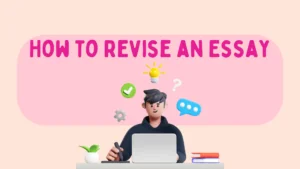A rhetorical analysis essay is a piece of writing that investigates someone else’s writing and the rhetorical techniques used to influence the audience through the text in a certain way. In essays of this type you won’t see much content being analyzed but rather the words, sentence structure, and other linguistic aspects. For many, such text may not turn out easy. In case you are also struggling with how to do a rhetorical analysis, we are here to help. We composed the guide below to make the writing process easier for you.

✅ AI Essay Writer ✅ AI Detector ✅ Plagchecker ✅ Paraphraser
✅ Summarizer ✅ Citation Generator
What is Analyze and Rhetorical Style Writing
Rhetoric is the art of persuasive communication, whether in writing or speech. At its core are three key concepts: logos, ethos, and pathos.

Logos, the logical appeal, basically means using reason and evidence to support an argument. In academic essays, for instance, you often see charts, statistics, and well-reasoned arguments that make the case irrefutable. Ethos, the ethical appeal, is how an author establishes credibility. Think of a medical doctor writing an article about health; their credentials lend weight to their words. Pathos, the emotional appeal, strives to evoke an emotional response from the audience. An advertisement showing happy families to sell a product taps into this appeal by connecting with viewers’ emotions.
Rhetorical style writing is characterized by its strategic use of these appeals to persuade an audience. This style looks not into what is said, but how it is said. It includes the tone, diction, and overall structure of the piece. For example, Martin Luther King Jr.’s “I Have a Dream” speech isn’t just powerful because of its message but also because of its rhythmic structure, emotive language, and masterful delivery.
To analyze this type of writing you need to examine how these elements work together to persuade the audience. You look at the text’s context—who wrote it, when, and why. You dissect the appeals used: How does the author build credibility? What logical arguments do they present? How do they play on emotions? Each element is scrutinized to understand the overall effectiveness. When analyzing a political speech, you might note the use of ethos in referencing the speaker’s experience, logos in their logical arguments for policy, and pathos in their appeal to the audience’s hopes and fears.
Text and Context as a Part of Rhetorical Analysis
The first thing that you should establish before diving into writing a rhetorical analysis is that a text isn’t limited to written words; it can be any form of communication like speeches, advertisements, or even satirical images. The context, as such, involves everything surrounding the text: the author, the intended audience, the time and place of production, and the purpose behind it. For example, analyzing Martin Luther King Jr.’s “I Have a Dream” speech requires an understanding of the civil rights movement to grasp its impact and significance fully.
Equally important in rhetorical analysis are claims, supports, and warrants. A claim is the main idea or argument the author wants to convey. Supports are the evidence or appeals (logical, ethical, emotional) used to back up the claims. Warrants are the underlying assumptions that connect the supports to the claims, often implicit but necessary for understanding the argument’s logic. For instance, an advertisement might claim that a product brings happiness (claim), show happy people using it (support), and assume that viewers will associate the product with happiness (warrant). Analyzing these elements helps in dissecting how effectively the text persuades its audience.
Easy Guide on How to Write a Rhetorical Analysis
Now, as we figured out the basics we can start writing. This might seem a daunting task, but by breaking it down into manageable steps, it becomes a clear and straightforward process.
- Gather all necessary information using the SOAPSTone technique, which stands for Speaker, Occasion, Audience, Purpose, Subject, and Tone.
For instance, when analyzing a speech by a political leader, identify the speaker’s background, the historical context of the speech, the intended audience, the purpose behind the speech, its main subject, and the overall tone used. - Next, examine the appeals—ethos, pathos, and logos.
A charity ad might use ethos by showcasing a respected figure endorsing the cause, pathos by showing heart-wrenching images of those in need, and logos by presenting statistics on how donations are used effectively. - Then, identify the style choices and details such as word choice, repetition, and imagery. Consider how these elements contribute to the text’s effectiveness.
A motivational speech might use repetitive phrases to inspire and energize the audience. - Once you have gathered and analyzed your information, build your analysis by asking questions like, “What is the author’s intention?” and “What effect does this work have on the audience?” This will help you understand the reasoning behind the writer’s choices.

Begin your essay with a clear introduction that provides background on the author and text, followed by a thesis statement. In the body paragraphs, support your thesis with detailed analysis, using examples from the text. Finally, conclude by summarizing your main points and restating the significance of your analysis.
By following these steps and focusing on the intricate details of the text and context, you can write a compelling and insightful rhetorical analysis essay.
How to Write a Rhetorical Essay: An Example Outline
To illustrate what a properly structured rhetorical analysis looks like, we decided to create an outline below to serve as an example.
Introduction
- Hook: Start with an interesting fact or a compelling quote from the text.
- Background Information: Briefly introduce the author and the text. Mention the context in which the text was produced.
- Thesis Statement: Present your main argument about the author’s rhetorical strategies and their effectiveness.
| Example: Hook: “I have a dream…” These four words became a rallying cry for civil rights in America. Background Information: Martin Luther King Jr.’s “I Have a Dream” speech, delivered in 1963 during the March on Washington, is a seminal piece of American oratory. Thesis Statement: This rhetorical analysis explores how King’s use of ethos, pathos, and logos, combined with his masterful use of prophetic language, creates a powerful and enduring message of hope and equality. |
Paragraph 1: Ethos
- Topic Sentence: Discuss how King establishes his credibility.
- Evidence and Analysis: Provide examples from the text where King references his leadership and experience.
- Connection to Thesis: Explain how these references bolster his authority and make his message more convincing.
| Example: Topic Sentence: King establishes his credibility (ethos) by aligning himself with the great leaders of American history. Evidence and Analysis: He references Lincoln and the Founding Fathers, grounding his argument in the respected tradition of American values. Connection to Thesis: By invoking these figures, King positions himself as a moral and authoritative leader, enhancing the persuasive power of his speech. |
Paragraph 2: Pathos
- Topic Sentence: Explore how King appeals to the emotions of his audience.
- Evidence and Analysis: Provide specific examples of vivid imagery and emotional language.
- Connection to Thesis: Discuss how these emotional appeals engage the audience and strengthen his overall message.
| Example: Topic Sentence: King’s use of emotional appeal (pathos) is evident in his vivid descriptions of injustice. Evidence and Analysis: He speaks of children being judged by the color of their skin and not the content of their character, evoking strong emotions. Connection to Thesis: These emotional appeals resonate deeply with the audience, making his plea for justice more impactful. |
Paragraph 3: Logos
- Topic Sentence: Analyze King’s use of logical appeals.
- Evidence and Analysis: Highlight examples of logical arguments and supporting evidence.
- Connection to Thesis: Explain how logical reasoning complements his emotional and ethical appeals.
| Example: Topic Sentence: King employs logical arguments (logos) to present a compelling case for civil rights. Evidence and Analysis: He cites statistics and historical facts to underscore the ongoing struggle for equality. Connection to Thesis: These logical appeals provide a rational foundation for his emotional and ethical arguments, enhancing the overall persuasiveness of his speech. |
Paragraph 4: Style and Tone
- Topic Sentence: Examine King’s stylistic choices and tone.
- Evidence and Analysis: Discuss the impact of his word choice, repetition, and prophetic tone.
- Connection to Thesis: Show how these elements contribute to the enduring power of his message.
| Example: Topic Sentence: King’s prophetic tone and stylistic choices elevate his speech to a timeless declaration of hope. Evidence and Analysis: The repeated phrase “I have a dream” creates a rhythmic and powerful refrain. Connection to Thesis: This stylistic choice not only emphasizes his vision but also reinforces the emotional and ethical appeals of his message. |
Conclusion
- Restate Thesis: Summarize your main argument.
- Summary of Key Points: Briefly recap the main points from the body paragraphs.
- Final Thought: Discuss the broader significance of King’s speech and its impact on society.
| Example: Restate Thesis: Through his masterful use of ethos, pathos, and logos, combined with his prophetic language, King delivers a powerful message of hope and equality. Summary of Key Points: By establishing his credibility, appealing to emotions, using logical arguments, and employing a prophetic tone, King’s speech continues to inspire generations. Final Thought: The “I Have a Dream” speech remains a beacon of hope and a reminder of the ongoing struggle for civil rights, demonstrating the enduring power of effective rhetoric. |
FAQ
Follow us on Reddit for more insights and updates.





Comments (0)
Welcome to A*Help comments!
We’re all about debate and discussion at A*Help.
We value the diverse opinions of users, so you may find points of view that you don’t agree with. And that’s cool. However, there are certain things we’re not OK with: attempts to manipulate our data in any way, for example, or the posting of discriminative, offensive, hateful, or disparaging material.